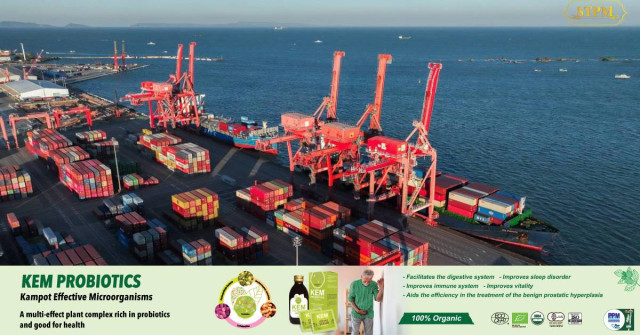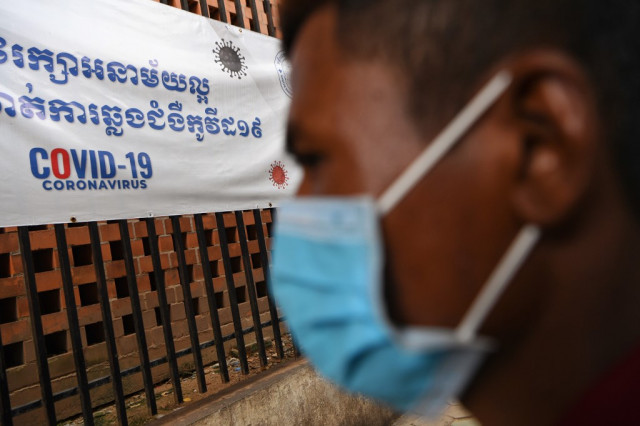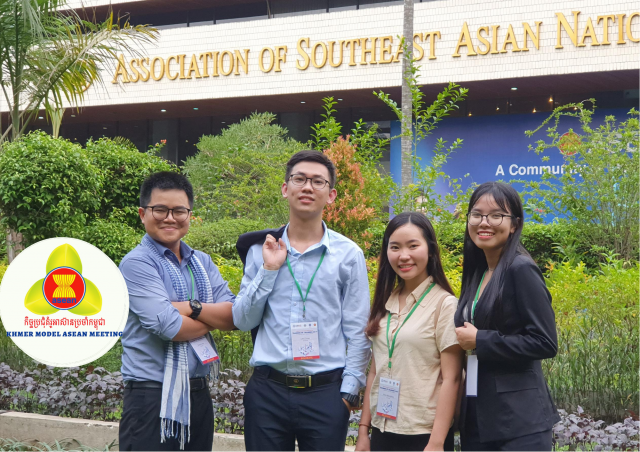Work Starts on $243m Sihanoukville Terminal Phase 1

- By Torn Chanritheara
- December 22, 2023 2:00 PM
PHNOM PENH – Construction of the first phase of a new deep-water container port has started at Sihanoukville, with Cambodia praising 70 years of diplomatic relations with project funder Japan.
The first of three phases is expected to cost about $243 million and will be completed in 2026.
At 350 meters long and 14.5 meters deep, it will be able to accommodate vessels with a capacity of 60,000 tons or 4,000 TEUs (twenty-foot equivalent) traveling from ports in the Asia-Pacific region to the Sihanoukville Autonomous Port and will increase capacity of the port to about 1.25 million TEUs per year.
The terminal, construction of which is funded by the Japanese government, is being built by the Japanese company TOA Corporation and technically supervised by Nippon Koei and Oriental Consultants Global.
The current terminal allows for the arrival of only 18% of shipping that could potentially dock in Sihanoukville. The new terminal will increase this to 93% of Asia-Pacific shipping, the PM said.
It will also cut the cost of shipping by about $200 per TEU, bringing it into line with other countries in the region.
Prime Minister Hun Manet said accommodating bigger ships would mean goods would not have to be transferred from large ships to smaller ones before being landed in Sihanoukville.
“We need to use all the potential we have,” he said.
“On one hand, expanding the potential will make the economy prosper and on the other hand bring benefit to the people.”
The volume of goods passing through the country’s largest seaport has increased significantly.
In the first 11 months of 2023, it was more than 7 million tons, an increase of 11.34% and the total revenue was more than $85 million, up 2.71% on the same period last year.
In addition, the volume of containers passing through the Sihanoukville Autonomous Port totaled more than 750,000 TEUs, with an average increase of 10.83% in the last 12 years from 2010 to 2022.
Hun Manet said that by 2029 Cambodia will welcome all sizes of ships from America and Europe after the completion of the second and third phases of the terminal.
The second phase will allow container vessels with a capacity of 120,000 tons or 10,000 TEUs to transport goods within the Indo-Pacific region to Sihanoukville and increase the port capacity to more than 1.8 million TEUs per year.
After the third phase, the port will be able to received container vessels with a capacity of 160,000 tons, or 15,000 TEUs. The container port will increase the capacity to about 2.5 million TEUs per year.
Construction of the second and third phases are expected to cost a total of $698 million of which more than $500 million will be concessional loans from the Japanese government and more than $100 million will be contributed by the Cambodian side.
The phase two is planned to start in 2025 and complete in 2028 while the third one will be start in 2026 and finish in 2029.
“Today is a testament of the expanding and strengthening Cambodia-Japan relations and set the direction for a long-term strategy,” Hun Manet said.
“Japan is an important friend of Cambodia who has participated in the development of Cambodia from the past to the present and future.”
Ishibashi Shintaro, Japan’s Parliamentary Vice-Minister of Land, Infrastructure, Transport and Tourism, said that Japan has consistently supported the development of Sihanoukville port since 1990s and will continue to provide capacity-building for port staff.
“In the future, we intend to further contribute to the development of the Cambodia’s port sector by combining the forces of the public and private sectors of Japan and by sharing our knowledge and experiences with Cambodia in the development, operation and management of Sihanoukville port,” he said.
This year marks 70th anniversary of diplomatic ties between Cambodia and Japan and two sides elevated the relation to highest level of Comprehensive Strategic Partnership.
Meanwhile, two mobile harbor cranes at the port which are capable of lifting up to 100 tons were also officially inaugurated.
Both cranes are from a grant from Japan under the Economic and Social Development Program with a total of $13.9 million.















